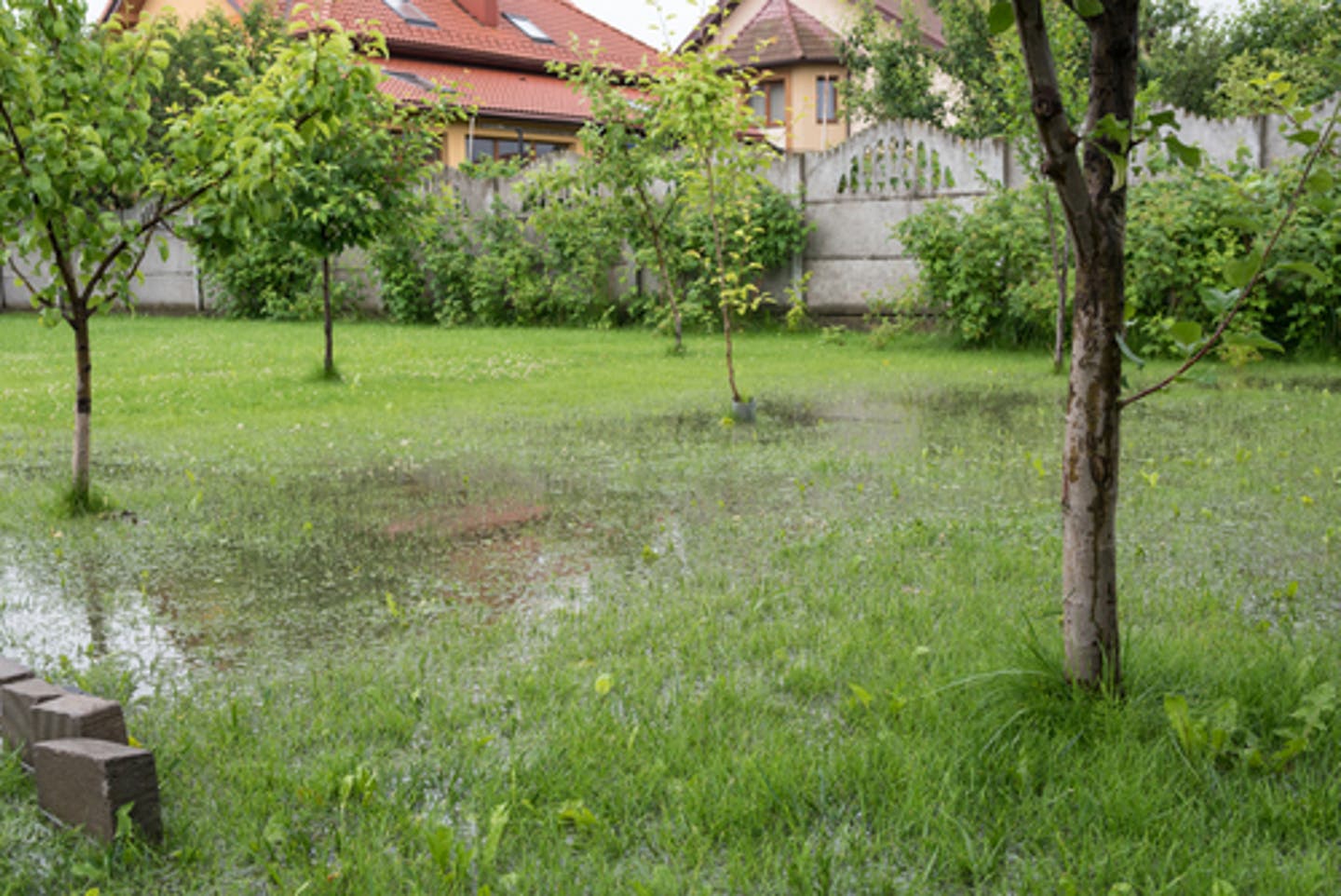
A flooded yard can cause serious damage to your property. Luckily, there are ways to help prevent this.
Whether flooding in your yard is due to poor drainage, improper landscaping, or heavy rainfall, standing water can accumulate and damage the landscape and your property’s foundation.
Flooding in your yard can lead to:
- Foundation damage.
- Peeling paint.
- Basement flooding.
- Soil erosion.
It’s essential to resolve these issues as soon as possible to reduce and prevent further damage.
Why is My Yard Flooding?
Inclement weather is a common reason for yard flooding. Heavy rainfall and floods can cause landslides, soil erosion, and property damage.
Aside from mother nature’s influence, here are a few potential man-made reasons for flooding:
- Overwatering. If there are noticeable puddles of water with no recent rainfall, you may need to refresh your watering schedule or sprinkler system.
- Compacted Soil. Soil compaction can reduce the rate of water infiltration and drainage. This can be a result of heavy rain, parked cars, or heavy foot traffic.
- Poor Grading. Proper grading prevents water from seeping into your foundation.
- Poor Drainage. It’s important to install a drainage system in your yard to prevent erosion and control water flow.
- Clogged Gutters. Neglecting your gutters can lead to structural damage and improper water flow.
Immediate Solutions for Flooded Yards
If you’re anticipating flooding due to weather, the following are short-term solutions to help prevent your yard from flooding:
Sandbags are a great option for immediate yard flood control. Before placing the sandbags around the perimeter of your yard, activate them with a garden hose to allow them to fully expand before stacking.
A water pump, also known as a sump pump, can automatically detect rising water levels. It pushes water out and away from your property accordingly.
Long-Term Solutions for Flooded Yards
A flood demands immediate action. So, along with short-term solutions, you should consider these long-term options to help protect your property from future flooding.
A French drain, a trench filled with loose stones and covered with earth, reduces standing water, draws in water from saturated ground, and protects the foundation of the property by ultimately redirecting the flow of water.
Proper soil grading creates a downward slope away from your foundation. This can be a large project, but it may be worthwhile to help prevent water damage long-term.
A dry well is an underground structure that captures water and lets it filter into the ground slowly. Dry wells are a great option for properties with high water tables or where French drains aren’t practical.
Better Landscaping to Help Prevent Yard Flooding
Floods are unpredictable, but there are a few landscaping strategies that will help protect your yard:
- Add more greenery to cover exposed soil, which is more vulnerable to flooding and erosion.
- A rain garden can help collect runoff rainwater, prevent soil erosion, and remove standing water in your yard.
- Mulch soaks up standing water, prevents soil erosion and runoff, and provides valuable nutrients for your plants.
- Plant grass known for its ability to absorb rainfall and reduce runoff.
- Install a swale—a shallow ditch that can be lined with rocks, plants, or other natural elements to help camouflage them into the surrounding landscape.
- A dry creek bed requires very little maintenance and prevents erosion by reducing runoff and redirecting water flow.
These landscaping best practices can prepare and protect your yard from flooding, reduce the risk of property damage and limit the inconvenience caused by excessive water accumulation.
SERVPRO® Professionals Know Flooding
IIf you’re ever faced with a flooding emergency, SERVPRO is Here to Help®. We’re ready to help you throughout the entire water damage restoration process.
Our technicians are committed to returning your property to its pre-loss condition. Using a variety of proprietary chemicals, elite tools and equipment, and with decades of experience, we’ll make it “Like it never even happened.”
To find out more, contact us today or visit our FAQ and Glossary.